The first time you deploy a canister of bear spray shouldn’t be the first time you actually need it.
That’s one of the messages about enjoying the outdoors in bear country, explained Danielle Oyler during a recent presentation in Gardiner, Montana, located at Yellowstone National Park’s North Entrance.
Oyler is an affable and informative education coordinator with the Southwest Montana Bear Education Working Group, a new group formed in partnership with local federal agencies and nonprofits, to protect humans—and bears—from interactions between the two species.
State and federal agencies, including Yellowstone National Park, recommend that everyone carry pepper spray, also called bear spray, whenever they’re enjoying the outdoors in bear country, whether you’re day hiking, backpacking, fishing, floating, or mountain biking. A study conducted in Yellowstone found that only about 28 percent of backcountry users carried bear spray.
Autumn is no time to slack on bear awareness. Fall is when bears are at their hungriest, a period called “hyperphagia,” entering the time of year when they’re trying to pack on body fat to get them through the approaching winter months.
“We’re all about spreading the word about bear awareness to help prevent and decrease human-bear conflicts,” Oyler said.
Her group’s work is especially timely because grizzly bears have recently been expanding into areas of southwestern Montana where they haven’t been seen in recent memory, she said, where people may not be expecting to see them.
“We’re also working to increase tolerance for grizzlies,” she said.
One of her big jobs is presenting programs to the public on bear behavior, how to identify aggression in a bear, and how to defend yourself against a bear charge or attack.
A key part of Oyler’s program is letting participants actually handle a bear spray canister — not the real thing, but an identical training can full of an inert, non-peppery baking soda-based spray.
On a recent Saturday afternoon in Gardiner, employees of the Custer Gallatin National Forest set up a demonstration in front of the local Forest Service office on Gardiner’s main drag.
The best part? Oyler and the forest service crew had mounted a plush, toy-like bear, about the size of a small black bear, on a rolling platform with wheels and a short leash.
Yes, a chance to practice spraying a fake, moving bear with pepper spray.
The staff lined up a few willing participants side by side, told them to turn their backs to the stuffed bear, and to prepare to turn and fire when they heard one of them yell “Bear!”
Then the staffers gave the bear a fast push on its wheels, but stopped it from careening into the participants by its short rope.
The participants were told to give a short, 2-3 second blast of spray directed downward toward the bear and to envision creating a quick wall-like cloud of pepper-scented pain.
A canister has about 6-8 seconds of spray, and it’s best not to blow it all in one blast in case you need to spray again, Oyler said.
But with the shout of “Bear!” and the rapid approach of even a toy one, most reactions—including that of your correspondent—was to empty the whole can. Remember the acronym PASS from fire training? It was like that: Pull, Aim at the base of the bear, Squeeze the handle, and Sweep at the base of the bear.
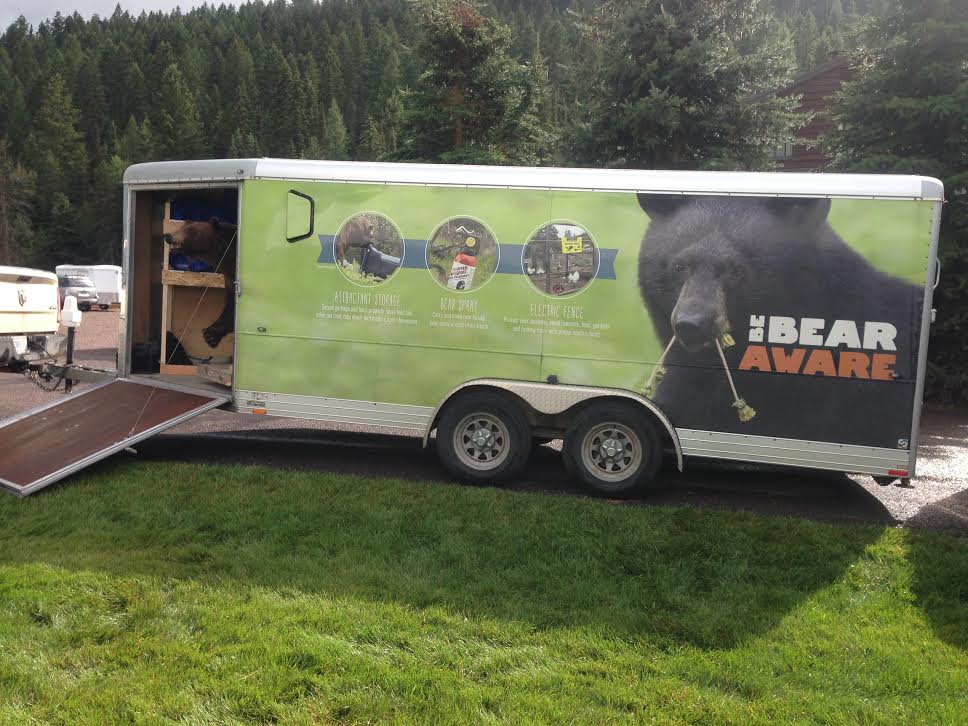
Oyler, during an hour-long presentation at wildlife tracks expert and biologist Jim Halfpenny’s Gardiner classroom, A Naturalist’s World, said a charging grizzly is much more likely to be down on all fours. A bear standing upright on its back legs is more likely a curious bear standing up to get a better look at you.
An aggressive bear makes “chuffing” sounds, clacks its jaws and stomps the ground, Oyler said.
But if you see the bear before it sees you, back away slowly and get out of there. Don’t draw the bear’s attention to yourself.
“Your behavior can influence the outcome,” she said. “Avoiding a conflict is easier than dealing with a conflict.”
Keep your canister handy and visualize what you would do if a bear came charging.
Be aware of bear signs such as scat, tracks, claw marks on trees, and disturbed, dug up ground where a bear might have been digging for insects or rodents. Bears are most often active at dawn and dusk, but a female with cubs can be moving around all day. A bear might be bedded down in a grove of trees on a hot day.
If an encounter appears imminent, don’t run. Things that run or move fast—including mountain bikes—equal prey in a bear’s world, Oyler said.
“Stand your ground. A bear doesn’t know you don’t have teeth and claws,” Oyler said.
And a bear, especially a younger, sub-adult, may just be curious.
A young woman was “gummed” by a sub-adult male in the Lake Lodge cabin area in Yellowstone back in 2002. Abigail Thomas, 30 at the time, was out jogging in late May, when she was cornered up against a buck-and-rail fence. She said “Hey, bear, leave me alone” before he put his teeth around one of her thighs. She yelled and sprinkled him in his face with water from her water bottle. He let go of her leg and moved away. Her leg was bruised, but the skin unbroken.
If you’re camping, store your food far from where you’ll be sleeping. Don’t sleep in the clothes you cooked in, don’t bring food into your tent, and keep all strong scents such as toothpaste, deodorant and sunscreen, out of your tent at night.
But keep your bear spray in the tent. In the unlikely event a bear comes into your tent through the door, be prepared to spray it even if it means you get sprayed, too. Painful, watering eyes can be remedied more easily than an injury from a bear. Halfpenny suggested keeping a large knife in your tent so you could cut your way out the back if a bear came in the front.
And Oyler said don’t practice spraying your own canister of real pepper spray because you run the risk of dispensing what you might need later.
Oyler provided some statistics from a study, “Efficacy of Bear Deterrent Spray in Alaska,” which analyzed 83 bear spray incidents in Alaska between 1985 and 2006. In 98 percent of the incidents, no humans were injured, and just 2 percent were injured so slightly they did not require hospitalization.
Bear spray is available throughout Yellowstone and at outdoor retailers. Entrepreneurs will also rent you a canister of bear spray, which is handy if you fly to Yellowstone because bear spray cannot be taken onto commercial airline flights. Canisters are all marked with expiration dates, and those dates should be heeded, Oyler said, because the propellant can degrade over time.
Dead canisters can be recycled at drop stations in Yellowstone and also at the REI store in Bozeman, Montana, Oyler said.
 Yellowstone Insider Your Complete Guide to America's First National Park
Yellowstone Insider Your Complete Guide to America's First National Park
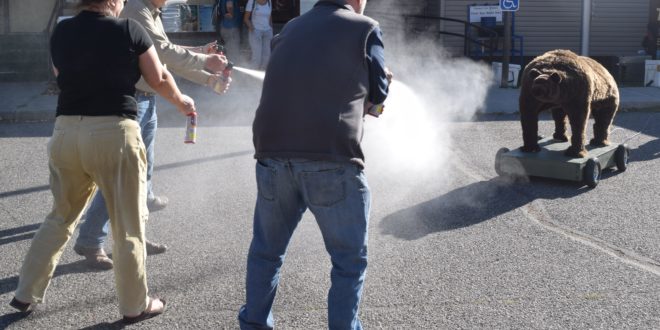


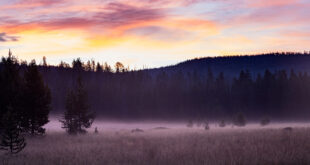
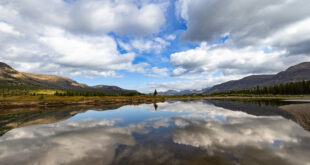
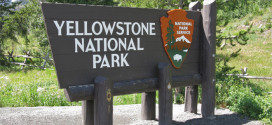
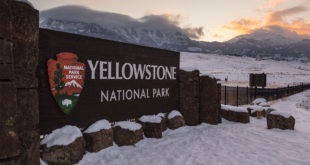
You must be logged in to post a comment.